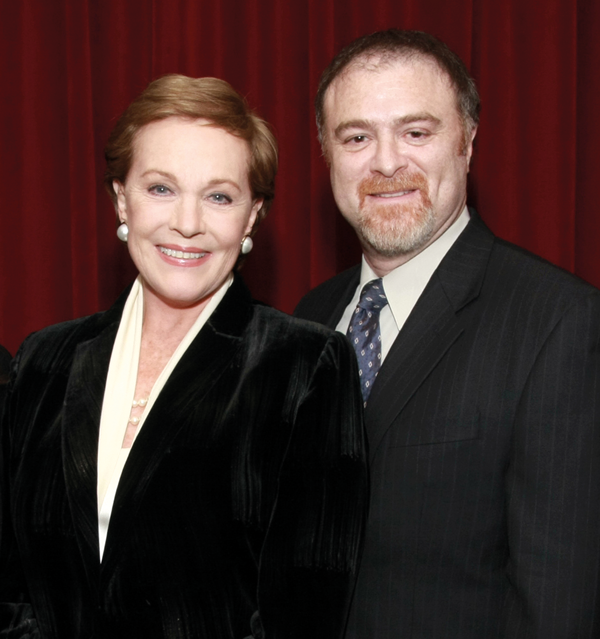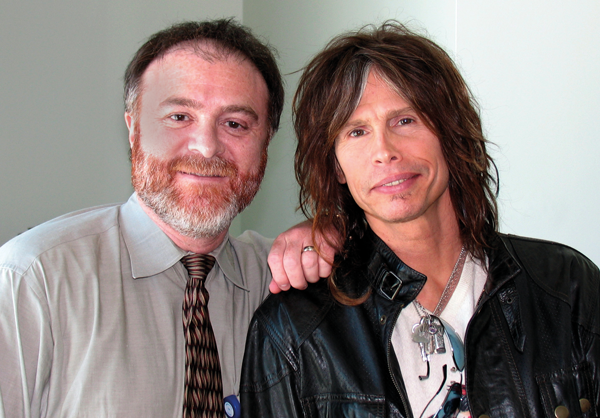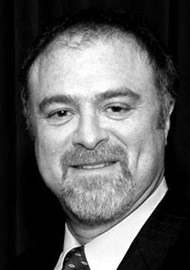Dr Steven Zeitels is widely recognised as the foremost laryngologist of his generation. He has been at the forefront of innovation for 25 years, and has treated innumerable high-profile singers, most recently Sam Smith and Adele. Here, he gives us some of his pearls of experience gleaned over the years.
“I have no pretension to speak with authority as a musician or even a physiologist and in the following pages I do not profess either to teach singing or elocution, or to throw new light on the obscurer problems of voice production. Matters belonging to either of these provinces are dealt with only in their relation to the well-being and functional efficiency of the vocal organs. That is a subject which I may with less presumption claim a hearing. For a quarter of a century, I have been engaged in ministering to diseased throats… I have thus had very unusual opportunities of studying the conditions which affect the voice for good or for evil, and my own observation has been assisted and supplemented by the personal experience of vocalists of world-wide celebrity… I wish it, however, to be clearly understood that my point of view is throughout that of a practical physician.”
Sir Morell Mackenzie: 1888 [1].
Remarkably, I had just completed a quarter century of caring for vocalists when Dr Costello invited me to write this piece reviewing my experiences and observations. The quote above, which was extracted from the preface of Mackenzie’s classic text, The Hygiene of the Vocal Organs, reflects my perspective and has guided my philosophy in caring for vocalists.
His text also served as a personal inspiration for designing innovative phonomicrosurgical procedures to enhance singers’ voices. I will focus on surgical issues herein, given the space limitations of this review, and the controversies associated with microsurgery in vocalists.
“It became clear to me that there was a regrettable paradox in managing laryngeal disease / disorders that exists even today in many institutions and regions of the world.”
Mackenzie’s academic engagement of the renowned opera maestro Manuel Garcia, portrayed the inextricable linkage between performing vocalists and laryngologists since the origin of the specialty in Europe in the late 1850s. Garcia’s presentation, ‘Observations on the Human Voice’ [2], to the Royal Society of London catalysed the formal initiation of the field of laryngology [3]. Today, many laryngeal surgeons continue this tradition of integrating medical and surgical management with those skilled in vocal arts, voice science and voice therapy.
When I began in earnest as a vocal surgeon in 1991, I had completed a head and neck surgical oncology fellowship and the majority of my work was focused on neoplastic diseases of the larynx, not unlike Mackenzie [4]. I immediately realised that in Boston, there was a large performing vocalist population of teachers and students at a number of conservatories and music schools as well as an active music culture in most genres. Remarkably, these singers received limited attention from the otolaryngology community. I viewed this as an opportunity and spent a great deal of time with them. I would teach them vocal anatomy and physiology formally and informally, and they would teach me about the art and craft of singing.
From these early experiences, it became clear to me that there was a regrettable paradox in managing laryngeal disease / disorders that exists even today in many institutions and regions of the world. While there was detailed and algorithmic disciplined treatment of vocal cord cancer, there was erratic disparate management of vocalists that was highly dependent on inhaled potions, as well as ingesting and injecting varied substances, such as vitamins, adrenergic agents and steroids. Consequently, vocalists were often cared for with great nuance but not typically managed by strategies that had been analysed scientifically or peer reviewed in the academic literature. It became clear that singers were vocal athletes who would be best served by a vigorous level of detailed vigilance. Conversely, vocal cord cancer patients would benefit from the nuance involved in the management of vocalists, which required deeper understanding of vocal physiology than was routinely provided in residency training. For this reason, I initiated a post-residency laryngeal surgery fellowship in 1996 with advice from the renowned Head and Neck Surgeon, Jatin Shah.
“Diminished suppleness and mucosal pliability is not unique to Dame Julie and is almost always the occurrence for vocalists whose phonomicrosurgery negatively impacts their voice.”
This integration of skill sets delineating innovative care of singers and glottic cancer patients through the 1990s culminated in a 2001 supplement to the Annals of Otology, Rhinology and Laryngology, which introduced a range of new concepts supported by scientific data [5,6]. Remarkably, the manuscript on phonomicrosurgical management of vocalists was the first large-scale study that provided substantial acoustic and aerodynamic data and provided surgeons with detailed images to understand the nuance required for successful phonomicrosurgical technique.
Of paramount importance was the understanding that vocal nodules [5,7], polyps [5,8,9], ectasias and varices [5,10,11] were subepithelial phonotraumatic lesions that should be treated by subepithelial resection similar to less commonly encountered intracordal cysts [12,13]. The subepithelial microflap approach with maximal preservation of normal superficial lamina propria was greatly facilitated by infusion of saline and adrenaline in the superficial lamina propria [3,14,15]. Since subepithelial resections require a higher level of technical skill, it has been adopted deliberately and steadily over the past 15 years.
Despite the surgical advances that had been achieved in the late 1990s, the looming case that attracted worldwide attention, leading to great fear in both patients and laryngologists, was that of Dame Julie Andrews. She had routine lesions that required a subepithelial resection. However, the normal superficial lamina propria, underlying the lesions as well as the overlying epithelium, were removed, leading to severe vocal deterioration. This incorrect surgical approach resulted in diminished pliability of the phonatory mucosa and the resulting voice loss.

Steven with Dame Julie Andrews.
Diminished suppleness and mucosal pliability is not unique to Dame Julie and is almost always the occurrence for vocalists whose phonomicrosurgery negatively impacts their voice. I performed a subepithelial resection of the scar, which improved her voice; however, there is not yet a superficial lamina substitute that can fully restore her voice [16,17].
Another key innovation for managing bleeding in singers was achieved when we introduced angiolytic lasers for the treatment of ectasias and varices over a decade ago [18]. Prior to that, it was technically very difficult to remove microcirculatory angiomata with fine needles and picks without injuring the underlying superficial lamina propria.
I worked closely with Rox Anderson [19,20], who created the concept of photothermolysis to treat port-wine stains in children. The 585nm (yellow light) pulsed-dye laser and the 532nm (green light) pulsed KTP laser were well suited to treat varices and ectasias in vocalists. The KTP laser has proven to be much more reliable and precise [21]. I had gained substantial experience with selective photothermolysis treatment of glottic dysplasia and RRP in the late 1990s, which paved the way for creating office-based laryngeal laser surgery in 2001 [22,23] and a new style of vocal cord cancer treatment [24,25]. Inevitably, the crossover of treating epithelial neoplasia led to a very effective new treatment for treating vocal haemorrhage in singers, which had been greatly needed [18].
Pulsed angiolytic KTP laser treatment of vascular lesions in singers received wide attention when the Wall Street Journal covered the academic release of this work, and subsequently, when Steven Tyler allowed videos of his microsurgery to be incorporated in a National Geographic Channel documentary, ‘The Incredible Human Machine’. With proper training, microlaryngoscopic KTP laser photoangiolysis of varices and ectasias is safe and has been used successfully on a range of vocalists including Lionel Richie, Keith Urban, Sam Smith and Adele.

Steven with Steven Tyler.
I estimate that I have performed over 1500 office-based laryngeal laser procedures since 2001 and I would strongly discourage the use of office-based methods in the treatment of phonotraumatic lesions in vocalists. One of the largest financial legal settlements in laryngeal surgery in our state occurred because of injudicious use of an angiolytic laser in the office for this purpose. Although it is technically easy to photocoagulate a polyp or other vascular lesion in the office, the method is not precise:
- The patient is awake so that the target vocal fold is moving.
- The lesions are often positioned medially so that treatment is being done on a tangent.
- The fibre-to-tissue distance (depth perception), which must be calibrated very precisely to deliver the optimal fluence, cannot be achieved with the two-dimension screen of a monitor.
- Consequently, the epithelium over the vascular lesion is lost without the stereoscopic magnified view provided by a surgical microscope.
- Similarly, the underlying normal superficial lamina propria is highly susceptible to injury.
“Despite the fact that I performed successful voice surgery in a substantial number of singers from 2000-2010, phonomicrosurgery was still widely considered to be very risky.”
I am very concerned about the potential impact of injudicious procedures being used on vocalists, as mentioned above. It took over a decade to dispel the public view that voice surgery was dangerous after Julie Andrews’ voice was lost as a result of a poorly executed procedure. Despite the fact that I performed successful voice surgery in a substantial number of singers from 2000-2010, phonomicrosurgery was still widely considered to be very risky. However, the broad international attention on Adele’s voice restoration surgery not only solved her dysphonia and bleeding problem but it also recalibrated the general world view of the safety of these interventions. In fact, many vocalists who had been performing in an injured state, and who should have sought surgical care years ago, are now seeking phonomicrosurgery. This has been amplified by the fact that touring has become increasingly important to a successful financial roadmap.
It is my hope that this brief review of key personal experiences from the past 25 years of treating performing vocalists provides value to those of you who manage singers or aspire to do so. I have delineated a list of surgical considerations for performing phonomicrosurgery in singers and I hope that you will utilise this as foresight since this knowledge was acquired through painstaking hindsight [26].
Considerations for performing phonomicrosurgery in singers:
- Perform a careful video stroboscopic examination with varying pitch frequencies, and loudness tasks to fully assess the three-dimensional regions of residual pliable superficial lamina propria. If possible, perform both rigid telescopic and flexible laryngoscopic exams.
- Be careful not to underestimate the general stiffness of phonatory mucosa associated with long-term phonotrauma.
- Review video stroboscopy with the patient and explain how the proposed surgery will enhance vocal-fold vibration.
- The primary indication for phonomicrosurgery typically relates to poor performance, dissatisfaction with the vocal function and lost opportunity income, etc. Benign lesions in vocalists are not a dangerous medical scenario.
- Have clear surgical objectives for the lesion(s) that will be treated.
- Ensure that your operating room is optimally equipped with instrumentation.
- Do not convince a vocalist to have surgery.
- Ensure that the postoperative vocal rehabilitation is planned.
- Know your own skills; you should not quote literature if it is not your personal experience.
- Understand that this is a highly networked patient population so that awareness of both good and bad results travels quickly.
- Explain that the surgery may improve the acoustic quality and / or the aerodynamic efficiency of the voice, which enhances vocal stamina and the amount of singing that can be done.
- Explain that vocal function is likely to improve but the vocal folds may not be perfectly smooth and straight after they heal. Some patients will unnecessarily perseverate about this.
- Be prepared to perform the procedure in two stages for complex cases and obtain the consent accordingly.
- Typically, bilateral lesions mandate that both sides are treated. Even if you believe that a large mass precipitated a smaller lesion on the other side, removing the larger mass does not cause the previously injured fold to resolve spontaneously and completely.
- Warn the patient that you may see more pathology under magnification of the microscope (e.g. sulcus, bridge, medial-surface ectasias) and obtain the consent accordingly for the freedom to treat it appropriately.
- I mandate two weeks of absolute silence without significant physical exercise when cold instrument dissection alone is done. If the angiolytic 532nm pulsed KTP green light laser is used, patients are kept on that protocol for three weeks since there will be substantial ecchymosis seen at two weeks if the patient is examined. This schedule is of substantial importance to patients who are travelling long distances. A majority of poor results that I have encountered from other surgeons were associated with voice use prior to epithelial healing. I have never seen muscle memory loss or atrophy in any vocalist who has been on voice rest for several weeks.
- I then advise speaking activities for one week along with the initiation of rehabilitation with a voice therapist or coach. Singing usually starts at three or four weeks. It is usually safe to schedule formal performances beginning at six weeks postoperatively.
- Surgical consent is optimally obtained with an accompanying family member or friend.
- The patient needs to understand the lesion could recur.
- If possible and with permission, provide contacts of other patients who have gone through the surgery.
References
1. Mackenzie M. The Hygiene of the Vocal Organs: A Practical Handbook for Singers and Speakers 8th ed. London, UK; Macmillan and Co; 1888.
2. Garcia M. Observations on the Human Voice. Proceedings of the Royal Society of London 1855;7:397-410.
3. Zeitels SM. Premalignant epithelium and microinvasive cancer of the vocal fold: The evolution of phonomicrosurgical management. Laryngoscope 1995;105(Supplement 67):1-51.
4. Mackenzie M. Growths in the Larynx. London, UK; J & A Churchill; 1871.
5. Zeitels SM, Hillman RE, Desloge RB, et al. Phonomicrosurgery in Singers & Performing Artists: Treatment Outcomes, Management Theories, & Future Directions. Annals of Otology, Rhinology, & Laryngology 2002;111(Supplement 190):21-40.
6. Zeitels SM, Hillman RE, Franco RA, et al. Voice and Treatment Outcome from Phonosurgical Management of Early Glottic Cancer. Annals of Otology, Rhinology and Laryngology 2002;111(Supplement 190):1-20.
7. Zeitels SM. Nodules, in Atlas of Phonomicrosurgery and Other Endolaryngeal Procedures for Benign and Malignant Disease. San Diego, USA; Singular; 2001:57-68.
8. Hochman II, Zeitels SM. Phonomicrosurgical Management of Vocal Fold Polyps: The Subepithelial Microflap Resection Technique. Journal of Voice 2000;14:112-18.
9. Zeitels SM. Polyps, in Atlas of Phonomicrosurgery and Other Endolaryngeal Procedures for Benign and Malignant Disease. San Diego, USA; Singular;2001:37-56.
10. Hochman II, Sataloff RT, Hillman RE, Zeitels SM. Ectasias and Varices of the Vocal Folds: Clearing the Striking Zone. Annals of Otology, Rhinology and Laryngology 1998;108:10-16.
11. Zeitels SM. Varices and Ectasias, in Atlas of Phonomicrosurgery and Other Endolaryngeal Procedures for Benign and Malignant Disease. San Diego, USA; Singular; 2001P:69-79.
12. Burns JA, Hillman RE, Stadelman-Cohen T, Zeitels SM. Phonomicrosurgical treatment of intracordal vocal-fold cysts in singers. Laryngoscope 2009;119(2):419-22.
13. Zeitels SM. Cysts, in Atlas of Phonomicrosurgery and Other Endolaryngeal Procedures for Benign and Malignant Disease. San Diego, USA; Singular; 2001:81-94.
14. Zeitels SM, Vaughan CW. A submucosal vocal fold infusion needle. Otolaryngology: Head and Neck Surgery 1991;105:478-79.
15. Zeitels SM. Atlas of Phonomicrosurgery and Other Endolaryngeal Procedures for Benign and Malignant Disease. San Diego, USA; Singular; 2001.
16. Karajanagi SS, Lopez-Guerra G, Park H, Kobler JB, Galindo M, Aanestad J, Mehta DD, Kumai Y, Giordano N, d’Almeida A, Heaton JT, Langer R, Herrera VL, Faquin W, Hillman RE, Zeitels SM. Assessment of canine vocal fold function after injection of a new biomaterial designed to treat phonatory mucosal scarring. Ann Otol Rhinol Laryngol 2011;120(3):175-84.
17. Zeitels SM, Blitzer A, Hillman RE, et al. Foresight in Laryngology and Laryngeal Surgery: A 2020 Vision. Ann Otol Rhinol Laryngol 2007;116 (Supplement 198):1-16.
18. Zeitels SM, Akst L, Burns JA, et al. Pulsed Angiolytic Laser Treatment of Ectasias and Varices in Singers. Ann Otol Rhinol Laryngol 2006;115:571-80.
19. Anderson R, Parrish J. Selective photothermolysis: precise microsurgery by selective absorption of pulsed radiation. Science 1983;220:524-7.
20. Anderson RR, Parrish JA. Microvasculature can be selectively damaged using lasers: A basic theory and experimental evidence in human skin. Lasers Surg Med 1981;1:263-76.
21. Zeitels SM, Anderson RR, Burns JA, et al. Office Based 532nm Pulsed-KTP Laser Treatment of Glottal Papillomatosis and Dysplasia: Letter to the Editor. Ann Otol Rhinol Laryngol 2007;116:317-18.
22. Zeitels SM, Franco RA, Jr Dailey SH, et al. Office-based treatment of glottal dysplasia and papillomatosis with the 585-nm pulsed dye laser and local anesthesia. Ann Otol Rhinol Laryngol 2004;113(4):265-76.
23. Zeitels SM, Akst L, Burns JA. Office Based 532nm Pulsed-KTP Laser Treatment of Glottal Papillomatosis and Dysplasia. Ann Otol Rhinol Laryngol 2006;115:679-85.
24. Zeitels SM, Burns JA, Hillman RH, et al. Photoangiolytic Laser Treatment of Early Glottic Cancer: A New Management Strategy. Annals of Otology, Rhinology, & Laryngology 2008;117(supplement 199):1-24.
25. Zeitels SM, JA Burns. Oncologic efficacy of angiolytic KTP laser treatment of early glottic cancer. The Annals of Otology, Rhinology, and Laryngology 2014;123(12):840-6.
26. Jackson C. Hindsight. Address to the Graduating Class of the Womens Medical College of Philadelphia 1925:1.
Declaration of Competing Interests: None declared.




